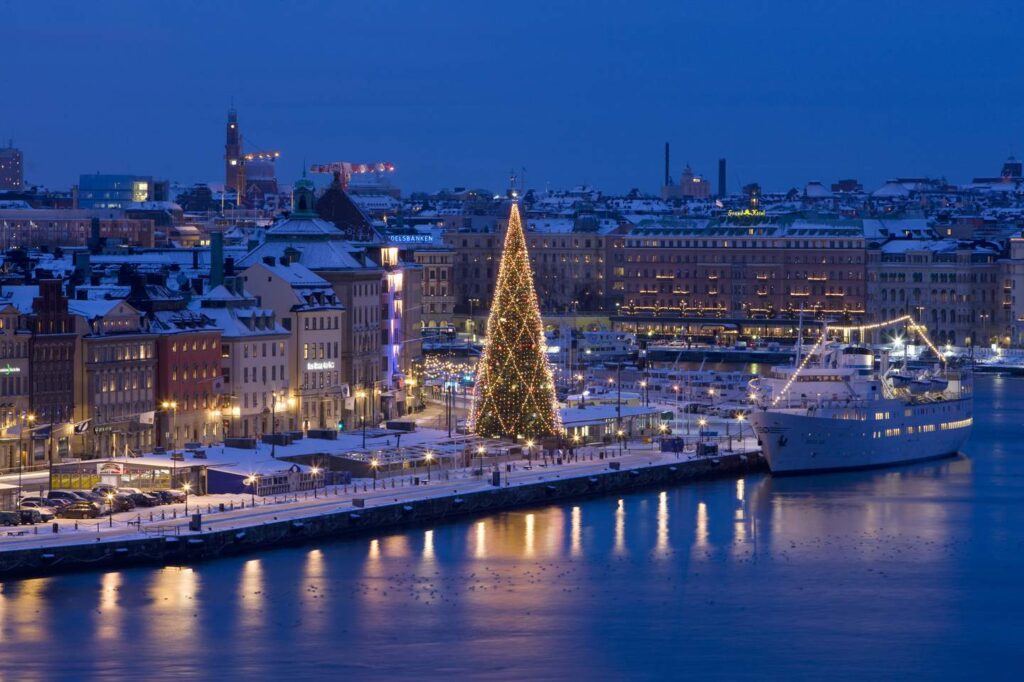News
21 December 2023
Blog
VLVbio – Reflecting on a Remarkable Year
As we bid farewell to another extraordinary year, the VLVbio team takes a moment to express our heartfelt gratitude to everyone who has been a part of our journey. The past year has been marked by incredible strides in liver disease research, groundbreaking innovations, and a surge in global awareness for chronic liver diseases. We are thrilled to be active contributors to this fast-growing and dynamic field, working towards a future where liver diseases are better understood and effectively addressed.
One of the highlights of our year was the opportunity to connect with professionals and experts from around the world at various conferences, including the EASL Congress and the AASLD Liver Meeting. These events allowed us to share insights, exchange ideas, and forge meaningful collaborations with individuals who share our passion for advancing liver disease research and treatment. The exchange of knowledge in these settings has been invaluable; reinforcing our commitment to pushing the boundaries of what is possible in liver health.
At VLVbio, we are especially proud to witness the growing awareness surrounding MAFLD a condition that often lurks in the shadows, asymptomatic and unnoticed until reaching advanced stages. Our dedication to shedding light on this silent liver disease is unwavering, and we are encouraged by the progress made by several patient advocacy groups and non-profits in increasing public awareness and understanding.
This year also marked a significant change in the nomenclature for Non-Alcoholic Fatty Liver Disease (NAFLD) to Metabolic Associated Fatty Liver Disease (MAFLD). This shift reflects an evolving understanding of the condition, acknowledging its metabolic roots and paving the way for more precise diagnostics and targeted treatments.
As we look ahead to the coming year, our team is filled with excitement and renewed energy. We anticipate a year of continued growth, exploration, and, most importantly, a year where we hope to finally see the approval of the first MASH treatment. This potential breakthrough holds the promise of transforming the lives of millions of patients affected by MAFLD. Our commitment to our vision of a world with no silent liver diseases is centered on the belief that every innovation, every discovery, brings us one step closer to a world where liver diseases are not only detectable but treatable.
The prospect of making a positive impact on the lives of patients motivates us daily. Our dedication to research, innovation, and collaboration remains steadfast, and we are eager to face the challenges and triumphs that the coming year will undoubtedly bring.
As we reflect on the accomplishments of the past year, we extend our deepest gratitude to our partners, collaborators, and the entire liver disease community. Your unwavering support has been instrumental in our success, and we look forward to continuing this incredible journey together.
Warm regards and Happy Holidays!
The VLVbio Team
Reda Elkhatib



15 December 2023
Home Slider
XboXLab – Our new partner in the Nordics!
We are happy to announce that we have partnered up with XboXLab for the distribution of the VLVbio kits in Sweden, Denmark, Finland and Norway!
The M30® and M65® biomarker assays are widely used in the field of hepatology, mostly within the chronic liver diseases such as Metabolic dysfunction-associated steatohepatitis (MASH). The biomarkers are used for IVD in Europe for the identification and diagnosis of MASH patients, as well as for the follow up of intervention effect. Other than the clinical use, the kits are also used in clinical research, where the biomarkers are included in the reduction of screen failure and as a secondary or exploratory end-point to check for treatment effect of new drugs in MASH clinical trials.
To all our Nordic customers, for more information, please visit XboXLab’s webpage or contact them directly:

Peter Blom
peter.blom@xboxlab.se
Tel: +46 107 888 331
30 October 2023
Home Slider
MEDICA Trade Fair

We are heading to Düsseldorf for the MEDICA Trade fair this November. Reach out to us to book in a meeting between November 14th-16th. We are happy to meet new business partners, customers, or start new collaborations!
6 October 2023
Blog
Liver Awareness Month
October is not just the month of pumpkins and Halloween; it’s also Liver Awareness Month, a time dedicated to shedding light on the importance of liver health! The liver plays a crucial role in our bodies, yet many people remain unaware of the silent threats that can affect it, particularly chronic liver diseases. In this blog post, we will delve into the significance of Liver Awareness Month, the prevalence of chronic liver diseases, with a focus on Non-Alcoholic Fatty Liver Disease (NAFLD), the challenges of diagnosing silent liver diseases, and the importance of raising awareness, finding, diagnosing, and treating patients effectively.
The Silent Threat: Chronic Liver Diseases
Chronic liver diseases are a growing global health concern. Often referred to as the “silent killers,” these conditions can quietly progress over many years without any noticeable symptoms until the damage is severe. The liver is essential for metabolizing nutrients, filtering toxins, and producing proteins, making its health vital for overall well-being.
One of the most common chronic liver diseases is Non-Alcoholic Fatty Liver Disease (NAFLD). NAFLD (or MAFLD) is characterized by the accumulation of excess fat in the liver cells of people who drink little to no alcohol. It is often associated with obesity, diabetes, and metabolic syndrome. NAFLD can progress to a more severe form known as Non-Alcoholic Steatohepatitis (NASH or MASH), which includes liver inflammation and can lead to cirrhosis, liver failure, and even liver cancer.
The Challenge of Diagnosing Silent Liver Diseases
One of the main challenges in addressing chronic liver diseases is the difficulty in diagnosing them early. Since these conditions typically manifest without symptoms until significant liver damage has occurred, many individuals are unaware of their condition until late later disease stages.
Standard biomarkers of liver injury can be valuable tools to indicate a problem with the liver, but are non-specific and may perform poorly in the early detecting of NAFLD and NASH. Therefore, it is essential to complement the use of standard biomarkers in order to increase the accuracy for detecting and stratifying NAFLD and NASH patients at an early stage, before advancements into end stage liver disease.
A Patient’s Perspective
To understand the challenges of diagnosing silent liver diseases better, let’s hear from one NAFLD patient:
“I had always thought I was in good health until a routine check-up revealed something unexpected. My doctor told me I had a fatty liver with possible inflammation and fibrosis, but I had no symptoms at all. It was purely coincidental that we found this out. I’m still uncertain about where I stand in the disease progression and what steps I need to take. It’s been quite confusing, not knowing whether I should be worried or if there’s something I can do to improve my liver health.”
Liver Awareness Month serves as a reminder of the importance of liver health. It is a crucial time to educate the public about chronic liver diseases, their risk factors, and the significance of early detection. Community awareness campaigns, healthcare professionals, and patient organizations play a vital role in spreading knowledge about liver health. Additionally, finding patients with silent liver diseases requires proactive efforts. Routine health check-ups should include liver function tests for those at risk, such as individuals with obesity, diabetes, or metabolic syndrome. Educating primary care providers about the importance of early screening can also lead to more timely diagnoses.
Here, measuring Keratin 18 (K18) has been shown to be a sensitive indicator of NAFLD and NASH, can aid in NAFLD staging, increase the accuracy of biomarker panels for fibrotic NASH, and follow up treatment effect on the liver.
Early diagnosis and intervention are key to managing chronic liver diseases effectively. While there is no specific medication for NAFLD or NASH as of today, lifestyle changes like weight loss, a balanced diet, exercise, and managing underlying conditions like diabetes can slow or even reverse liver damage in some cases.
Liver Awareness Month in October is a crucial opportunity to raise awareness about the silent threats posed by chronic liver diseases like NAFLD and NASH. By increasing public knowledge, advocating for routine testing in at-risk individuals, and promoting a healthy lifestyle, we can work together to prevent liver diseases from progressing to irreversible stages. Remember, early detection and intervention can make all the difference in preserving liver health and improving the lives of those affected. Let’s make liver health a priority this October and beyond!
Read more on how the M30 Apoptosense® ELISA can aid in diagnosing NASH and fibrotic NASH
Read more on how the M30 Apoptosense® ELISA can aid in diagnosing pediatric NASH
Read more on how the K18 assays can help in NAFLD clinical trials
Reda Elkhatib
31 August 2023
Blog
M65®: Unveiling a Promising Biomarker for Early-Stage Alcohol-Associated Liver Disease
Liver diseases, particularly those associated with alcohol consumption, pose significant challenges to public health worldwide. Identifying these conditions at an early stage can be crucial for effective management and prevention of disease progression. In the pursuit of more accurate diagnostic tools, researchers have studied Keratin 18 (K18), a protein with the potential to change our approach to alcohol-associated liver disease (ALD) diagnosis and prognosis. A recent study led by Dr. Maccioni (2023) and his team sheds light on K18’s role as a promising biomarker for early-stage ALD, offering new insights into disease detection, progression, and potential therapeutic interventions. This is further highlighted by an excellent overview of K18 in ALD in Dr. McClain and his colleagues’ Editorial published in Alcohol: Clinical & Experimental Research.
K18, a critical component of epithelial cells particularly in the liver, plays a pivotal role in keeping the structural integriry and safeguarding hepatocytes from apoptosis (programmed cell death) and necrosis. Extracellular K18 is a marker for epithelial cell death, and serum levels can be significantly elevated following hepatocyte death. K18’s levels increase in response to hepatocyte death, making it a potent indicator of the underlying liver damage. During cell death, loss of cell membrane integrity results in the release of intracellular proteins, including K18, into the extracellular compartment. The caspase cleaved form of K18 (ccK18) is a biomarker for apoptosis which can be detected in serum by the M30 Apoptosense® ELISA . The M65® ELISAs detects both caspase-cleaved and uncleaved K18. Thus, measurement of K18 by the M65® ELISAs can both quantify hepatocyte death and can differentiate necrosis from apoptosis. Several groups have used M65® as both a diagnostic and prognostic biomarker in severe alcohol-associated hepatitis (AH) (Vatsalya et al., 2020, Bissonnette et al., 2017, Woolbright et al., 2017, Atkinson et al., 2020). Importantly, K18 more accurately measures the magnitude of cell death in alcohol-associated liver disease (ALD) than the regularly used AST and ALT levels.
In this study, Maccioni and his team explored the potential of M65® as a diagnostic biomarker for early ALD cases. By assessing patients in a rehabilitation program, the study found that “K18-M65 separated minimal liver disease from early ALD (AUROC=0.8704; p<0.0001) with an optimal cut-off at 265.9 U/I”. This discovery would potentially offer a reliable method for identifying ALD at its nascent stages, when intervention is most effective.
Traditional markers like AST and ALT levels, while informative, may fall short in accurately characterizing the extent of liver damage in ALD. Maciconi et al‘s study emphasizes that “K18 more accurately measures the magnitude of cell death in ALD than the regularly used AST and ALT levels”. This heightened accuracy offers a profound advantage in disease assessment and prognostication, enabling medical practitioners to tailor treatment plans more precisely.
The study also touches on an intriguing aspect; patients falling into the “grey zone.” Some individuals with alcohol use disorder (AUD) exhibited K18 levels in the grey zone, indicating possible impending severe AH also shown in earlier trials (Bissonnette et al., 2017). This finding highlights M65®‘s potential to identify patients who might otherwise be overlooked by conventional markers, ensuring that those at risk receive timely intervention.
The Maccioni et al. study could show that M65® allows detection of early forms of ALD, as well as distinguishing early ALD from the minimal forms of liver disease with a high accuracy (AUROC=0.8704). They also saw that M65® is an independent predictor of more severe forms of ALD, confirming earlier studies that have been done using the biomarker. The authors conclude that the M65® assay can be helpful in in- and out-patient units for:
– Ruling out significant liver damage
– Picking up at risk patients that present with low transaminase levels but already have significant liver damage and/or even liver fibrosis
– A higher clinical diagnostic accuracy and certainty in patients with borderline transaminase values and/or liver stiffness values close to the lower limit of the significant fibrosis cut-off
– A clinical indicator of success in treatment with regard to alleviation of liver damage
As research on K18’s diagnostic capabilities deepens, exciting prospects emerge. The study’s robust findings underscore K18’s potential as a diagnostic tool across diverse populations. I would like to end this post by quoting directly from McClain and his colleagues’ Editorial:
“The authors make a strong case for using K18-M65 for detecting early and more aggressive ALD in patients such as those admitted to alcohol treatment programs. Research teams around the world are using terms such as early ALD, mild ALD, “walking ASH”, non-severe ALD, and others to define patient populations with early but clinically relevant ALD. Using tests such as K18, it is becoming clear that there are many of these patients hiding in plain sight. We, as hepatologists, are increasingly teaming up with AUD treatment teams to treat our patients with more severe ALD. In a similar vein, addiction specialists and primary care physicians need to know when to refer patients with AUD to hepatologists. The K18 may be an excellent biomarker for assisting in the decision making. The K18 is not yet FDA approved but the value of this test as an important biomarker across the spectrum of ALD is becoming increasingly clear.” (McClain 2023)
Reda Elkhatib
15 August 2023
Home Slider
A Message From the VLVbio Team
Hello dear friends and supporters,
As the warmth of the Swedish summer slowly gives way to the soon coming colorful embrace of autumn, we find ourselves reenergized and ready to continue our mission. We are delighted to be back and to share with you the passion that fuels our purpose.
After a well-deserved break, we’re excited to return to our work, more determined than ever to raise awareness about chronic liver conditions and make strides towards our vision of a world with no undiagnosed liver diseases. The sunshine and relaxation (and quite a lot of rain!) of the summer months have provided us with the inspiration needed to push forward and make a lasting impact on the lives of those affected by these silent ailments.
The Swedish summer has always been a time of reflection, growth, and rejuvenation for us. We’ve taken this opportunity to recharge our energies, connect with our loved ones, and find fresh perspectives to bring back to our mission.
We extend our heartfelt gratitude to all of our partners and friends for this half of the year. Together, we shall continue our work toward making a difference in the lives of countless liver disease patients, with raised awareness, early detection, and well established treatment and follow-up.
As we dive back into our work, we invite you to join us on this journey towards our vision. Keep an eye out for our upcoming events, publications, and educational initiatives during the fall and winter.
Thank you for being a part of our community, for your trust, and for your commitment. Together, we can make a significant impact and work towards a world where no one has to suffer from undetected liver conditions. Here’s to a season of renewed purpose and the promise of a healthier, brighter future for all. Please enjoy some lovely pictures from a typical summer here in Stockholm, Sweden.
With gratitude and determination,
The VLVbio Team





